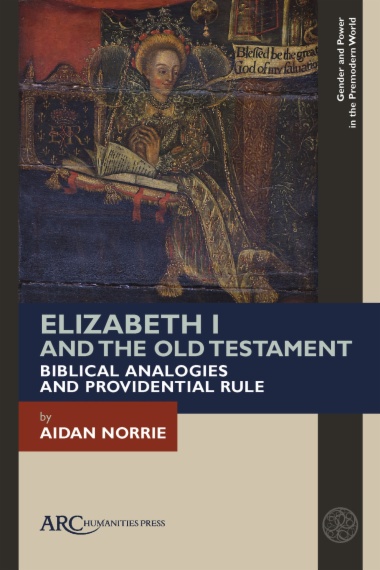Throughout her reign, Elizabeth I and her supporters used biblical analogies to perpetuate the Queen’s claim to be England’s providential Protestant monarch. While Elizabeth’s parallels with various biblical figures—including Deborah, Esther, Judith, David, Solomon, and Daniel—have all received varying levels of attention in the scholarship, this is the first analysis of how biblical analogy functioned as a religio-political tool for Elizabeth across her reign. Taking both a chronological and thematic approach, this book addresses this gap by analyzing Elizabeth and her supporters’ use of the Old Testament to provide justification for decisions (or the lack thereof), to offer counsel to the Queen, and to vindicate both female kingship and the royal supremacy. It argues that biblical analogies were a vital component of Elizabethan royal iconography, and that their widespread use demonstrates their potency as a tool for legitimizing and sustaining her power.
- Front Cover
- Half-title
- Series information
- Title page
- Copyright information
- Dedication
- Table of contents
- List of figures
- Acknowledgments
- Abbreviations and Textual Conventions
- Dramatis Personae
- Introduction
- Gender and Female Kingship
- Biblical Analogy: A Contextual History
- Book Overview
- Chapter 1. Elizabeth I’s Use of the Old Testament
- The Coronation Procession
- Precationes Privatae
- Christian Prayers and Meditations
- The Wisdom of Solomon
- “As Solomon, so I above all things have desired wisdom”
- Chapter 2. 1558–1569: Legitimizing the Regime
- Elizabeth and/as Deborah
- Restoring “the light of God’s holy worde” to England
- The European Protestant Cause
- When the Swedish Sheba visited the English Solomon
- The 1566 Oxford “Visitation”
- Elizabeth’s First Decade
- Chapter 3. 1570–1584: Popery, Plots, Progresses—and Excommunication
- Queen Excommunicated: Responses and Aftermath
- Refuting the Refuters
- Loyalty and Legitimacy
- Loyalty, Legitimacy, and the East Anglian Progress of 1578
- Enter the Jesuits
- Encouraging—or Cudgelling—Loyalty
- Embedding the Catholic Threat
- Chapter 4. 1585–1590: Biblical Typology and the Catholic Threat
- 1585: “wicked Traitors” meet God’s “goodnes and providence”
- 1586: Official and Popular Responses
- 1587: Legitimizing Regicide
- 1588: The Deliverance that “passeth all others”
- 1589: The “continuall providence and preservation of God”
- 1590: Queen Assailed
- Dealing with the Catholic Threat, Typologically
- Chapter 5. 1591–1602: The Twilight Years and the Catholic Threat Redux
- In the Shadow of the Armada
- The Second and Third Armadas
- The Final Years: How Do You Solve a Problem Like Ireland?
- Triumphal Protestantism Meets “Our good Hezekia” and “our gracious Debora”
- Conclusion: Biblical Analogy and Providential Rule
- Select Bibliography
- Primary Sources
- Secondary Sources
- Index

